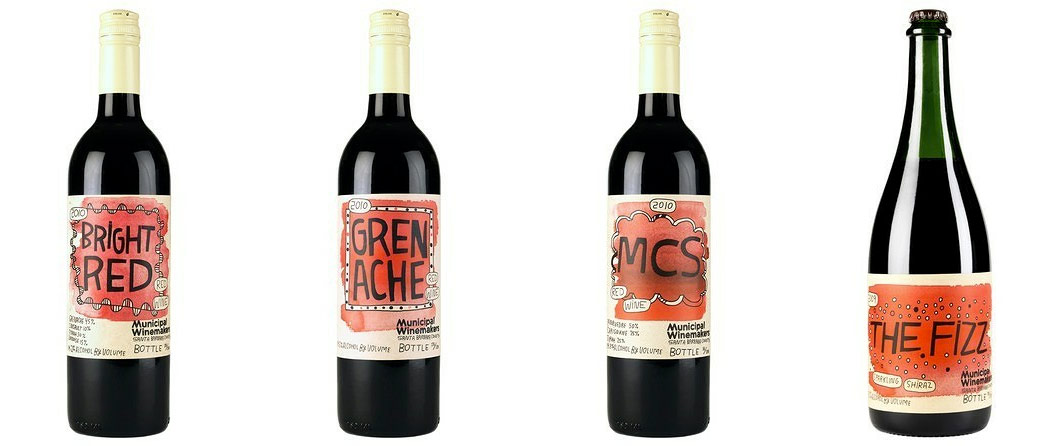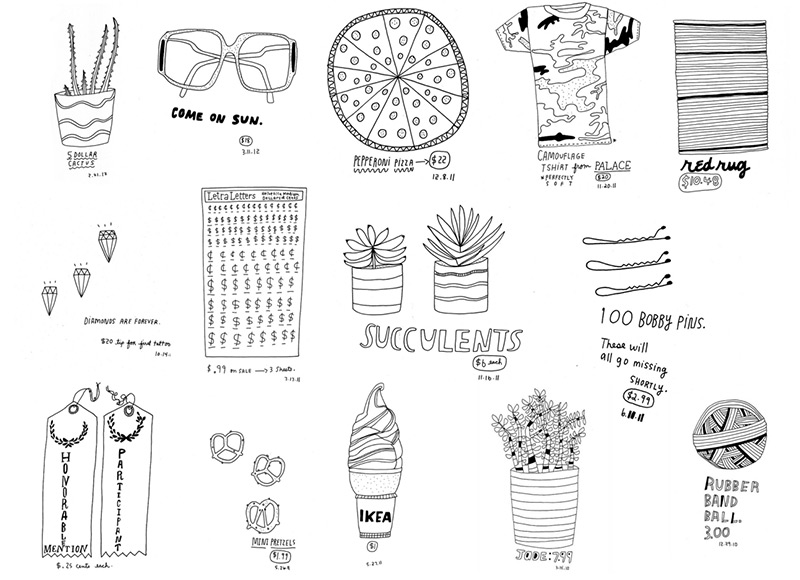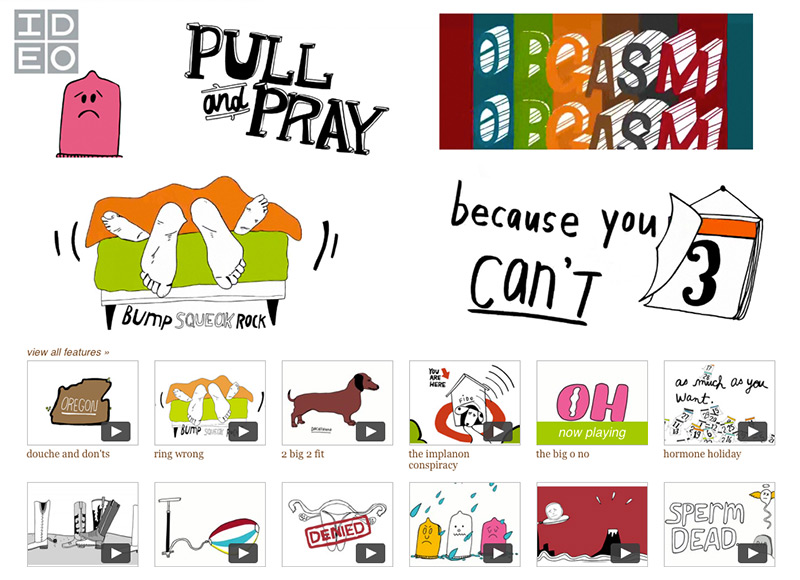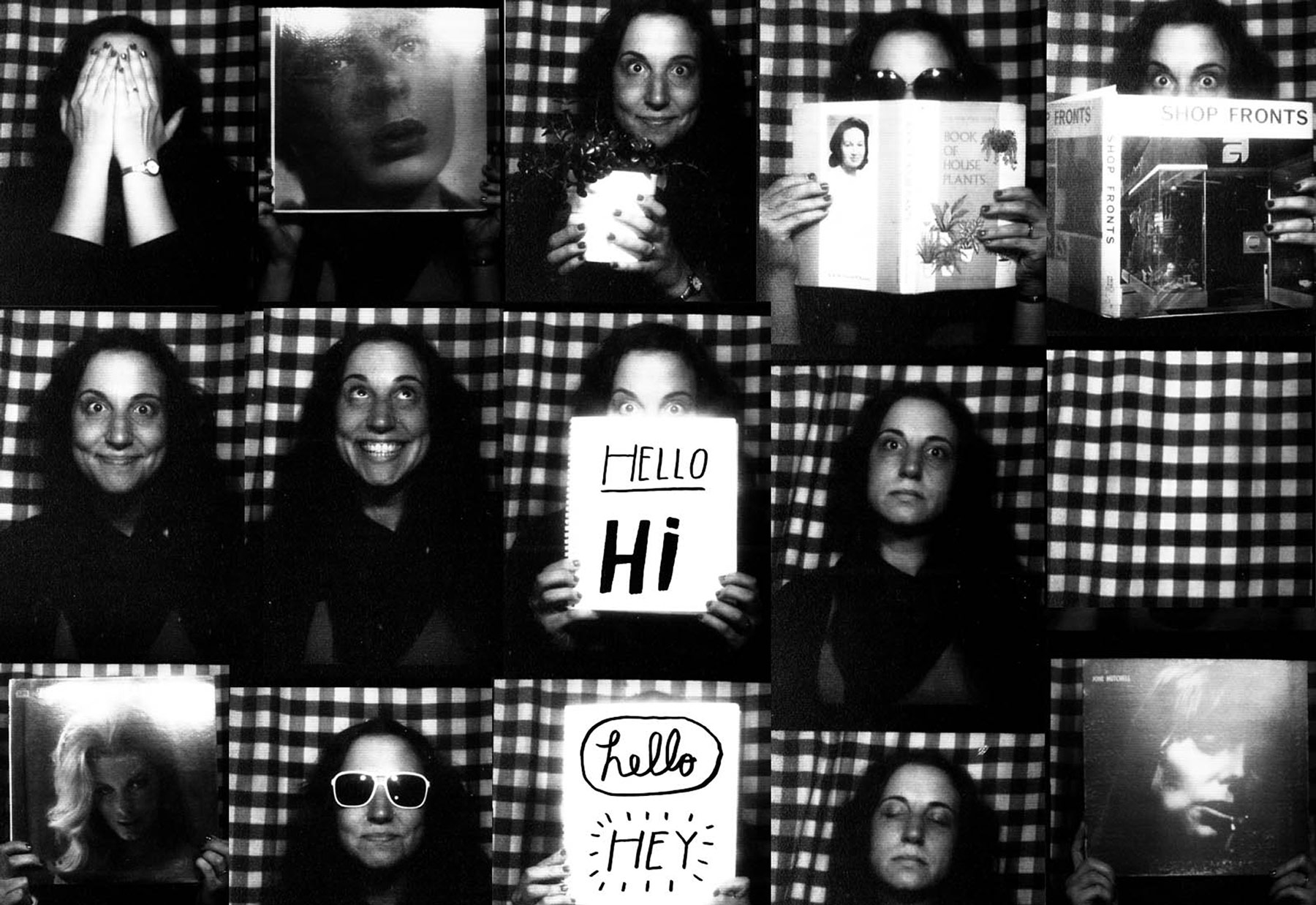
- Interview by Tina Essmaker June 5, 2012
- Photo by Kate Bingaman Burt
Kate Bingaman–Burt
- designer
- educator
- illustrator
Kate Bingaman-Burt is an illustrator and educator who has been making work about consumption since 2002, teaching since 2004, and drawing until her hand cramps since 2006. She lives in Portland, Oregon, and is the Assistant Professor and Program Coordinator of Graphic Design at Portland State University. Her first book, Obsessive Consumption: What Did You Buy Today?, was published by Princeton Architectural Press in 2010.
Interview
Describe your path to becoming an illustrator and graphic designer.
I grew up with a family of artists, but when I was younger, I didn’t really see myself pursuing art as a career. One of the things that I did love to do was start little side businesses. I remember having a really strong entrepreneurial streak, which I think is a normal thing for kids. When I was nine, I organized, color coded, and labeled all of my books and opened a library. But it wasn’t a lending library; you had to pay to check books out. Oh my god, that’s such an Alex P. Keaton thing to do.
Then, when I was 12, I started my own pin business. I would go through magazines and books my parents didn’t want anymore and cut out images that I thought were interesting. I’d mount the images on foam-core, paint gold around the edges, and glue pin backs on them and sell them to the two floral shops in town. They were super tacky, but I was pretty intense about it.
When I was in high school, I actually wanted to be a journalist and was really involved in yearbook, speech, drama, and the newspaper. I thought it would be fun to be either a broadcast journalist or be on TV talking about the news, which is so ridiculous as I hear myself saying it. I entered college as a mass communications major and I freaking hated it.
I was just talking to my senior thesis class last year about how normal it is to change majors. What I realized was that my reason for changing majors wasn’t career motivated; it was socially motivated. I ended up in mass communications because I really liked a few of the people I met in classes. At the end of my freshman year, I realized that mass comm was not for me. My friends and I went out into a field and burned our books in a post-goth, pre emo ceremony—no more mass communications! Then, along with another friend, I entered into being an English major because I really enjoyed the conversations we had in class. I didn’t think I was going to be this great writer, but I loved our class discussions and how they would extend outside of the classroom.
Those classes and conversations shifted the way that I looked at life. The beginning of me thinking critically happened in my English classes; it wasn’t necessarily in my art classes. I still look back at some of my English theory and contemporary criticism classes knowing that that’s where I learned the vocabulary to dissect whether I liked something or not. I still use a lot of those methods in the design classes I teach.
Long story short, my very, very first graphic design job happened when I was 20 years old. I was going to my friend Zach’s 20th birthday party and I had bought him a fishing pole, wrapped it, and drew all over the wrapping. That was just something I always did. In high school and junior high, I was the class letterer. I wasn’t the class drawer because there was already a kid who kicked ass drawing. He could draw horses and trucks really well; he could make a deer look like a deer. My concept of what drawing was was super narrow, so I just kind of gave up and focused on lettering. I was really good at drawing type, forging parent’s signatures, and things like that. I always felt comfortable with type, but I never equated that with illustrating whatsoever.
Anyway, I covered Zach’s present with hand-drawn stuff and his uncle, who was at his birthday party, ran a business and liked my hand-lettering, so he hired me to do some stuff. I was like, “Whoa, shut up. I can get paid to do this?” A paradigm shift happened at that moment.
All the while, I had also been an art minor in college, but only for the hanging out part. I saw there was a graphic design class and the tiny little school I went to had just hired a new graphic design professor; before that, the design classes were taught by the ceramics professor. I was fortunate enough to be in Marcus Melton’s first design class at College of the Ozarks. This is so dramatic of me, but it changed my life. That’s when I realized I could do all the things I liked. Graphic design gelled everything together and it all made sense—my interest in mass communications, English, letterforms, typography, and stories. That’s the Kate Bingaman up until 21 portion of the story.
Was that your “aha” moment?
It was that graphic design class I had with Marcus, although I do think I’ve had a few other “aha” moments.
One was a couple years down the line when I was working as an in-house designer for a gift company in Omaha, Nebraska. I was designing gourmet food packaging and other things. Basically everything I was designing was a gift in one way or another. Then I would go to trade shows all around the country and also act as the salesperson for these product lines. I had a lot of “me time” because I was traveling by myself. I think I was 23 or 24 at the time and I wasn’t quite sure what I was doing. I didn’t know if I wanted to stay at this job or if I still liked graphic design.
Every weekend I was being inserted into these surreal experiences in convention halls and I would talk to store buyers about purchasing products in bulk. When I wasn’t selling, I would sit and watch people and try to figure out why they would be drawn to one product over another. I think that’s where the fascination of understanding people’s emotions behind purchasing different objects started.
“I wanted to figure out why we put so much emotion onto objects. That’s when I decided to… study graphic design and consumerism. I wanted to intensely focus on one area and use design to talk through some of the things I was thinking about.”
I was doing a lot of these trade shows in 2000 when Beanie Babies were really popular. I was at a show in Washington, DC and had just set up my booth. We were all waiting for the trade show to start and we thought it was going to be a great one because there was a line of people wrapped around the building, waiting to get in. There was this huge TY Beanie Baby display across from me. The doors opened and it was insane; people were pushing each other down. These were grown-ass adults and business owners who were shoving each other out of the way to try to get their order in. I was sitting there thinking, “Holy shit! This is such a strange business. What is happening?”
At that point, I wanted to study it more. I wanted to figure out why we put so much emotion onto objects. That’s when I decided to apply to graduate schools to have more time to study graphic design and consumerism. I wanted to intensely focus on one area and use design to talk through some of the things I was thinking about. That was a big change for me.
Is that what started your Daily Purchase Drawings?
That didn’t start until 2006. I went to grad school in 2001 and that was a strange time. School started the first week of September and that term was the very first time I taught. I didn’t think I wanted to teach, but I ended up having a couple classes because I was a graduate assistant. During our third class together, September 11th happened and we were all watching it on our computers. I had twenty students I was responsible for and I wasn’t that old myself. It was intense.
The thing that came out of it—us being told that in order to get America back to where it needed to be, we needed to shop. I remember thinking, “Wow! That’s kind of fucked up too.” That’s when a lot of cynicism got shot into my work. That was another layer of what was happening at the time.
I started documenting the things I purchased and trying to figure out the stories behind other people’s purchases in early 2002. I had been taking pictures of objects at thrift stores and interviewing people there. I also did a project where I was stopping people in Target, interviewing them, and taking pictures of what they were buying. I did a series of yard sale photographs as well.
When I was in the thrift store one day, I saw this couch I wanted to buy for my studio, took a picture of it, and at that moment, decided I was going to document everything I purchased until the end of grad school just to see what would happen. I did that for the next 2.5 years and that’s when Obsessive Consumption started; I created a brand around that idea. I had a website where I would upload my digital photos—hello, 2.1 megapixels!—caption the purchase, and then assign a rating system. People would email me and I would ask for stories about their relationship with certain objects. That lasted until 2004.
Then I started drawing my credit card statements in 2004. I was in debt and felt like I had messed up big time. As a punishment, I made myself hand-draw all my credit card statements. I told myself I was going to do it until all my credit card debt was paid off. Through that process, I fell in love again with typography and making marks. I would also share those drawings online and people would send me stories about their guilt and spending issues. It turned into this shopping confessional. I would go to bed not feeling very well on a lot of those days because I would get emails from people and since we were anonymous to each other, it was safe for them to share their debt issues.
“It was about a year into my daily drawings when I started getting contacted to do freelance work. It’s been like that ever since. I know all my freelance work was born from that project.”

The daily drawings were born out of that. I was trying to figure out how to do something that wasn’t as depressing. I was still doing the credit card drawings, but I wanted to draw something else besides my dumb statements. In 2006, I started the Daily Purchase Drawings and I’m in my seventh year of that. I stopped doing the credit drawings in 2010 when I paid off all my credit card bills!
The daily drawings have yielded a couple other participatory projects as well. People will email me pictures of things they’ve stolen and I’ll draw them. I ask for people’s mix tapes to draw because I like old technology and how we put our emotional imprint onto these inanimate objects; a mix tape is a good example of that. I also have a list where people send me their arbitrary passwords because I’m also interested in how people protect their things.
It was about a year into my daily drawings when I started getting contacted to do freelance work. It’s been like that ever since. I know all my freelance work was born from that project. I didn’t intend for that. I was just doing that because I didn’t want to draw my credit card statements anymore. (laughing) That’s why I’m a really big advocate of doing self-initiated work.
That’s awesome. On a side note, I’m looking at your site. Did you make the dresses on there?
Yes. That is my debt dress and my purchase dress. I started with a lot of photography and I do a lot of illustration, but I also have a huge love for installation and textile work. Like those dollar sign pillows on my site—those are part of an installation and people can go run and jump into them, hug them, or punch them. There are also the credit card pillows—you can cry into them. It is all tongue-in-cheek, but it’s also talking about a topic that is upsetting for people.
Did you have any mentors along the way?
I have two really excellent role models in my mom and my grandmother. My grandmother was a children’s book illustrator from the time she was 19 until she was in her late 70’s and I think she would have continued on except she had macular degeneration and lost her central vision. She’s my role model for attitude. She would always be super busy and working her ass off, but she also realized how lucky and fortunate she was to be drawing for a living. I never ever want to take for granted that what I do for a living is teach, draw, and lead a creative existence. That thankfulness radiated from my grandmother.
My grandmother also balanced her time really well. She had a studio in her house and I remember going there when I was little and never feeling like I was interrupting her. She would show me what she was working on and I would hang out with her in her studio. I can still remember the smells of the markers and paint. She actually just passed away a few weeks ago and I’m going to have her drawing table that she used shipped to my studio. I’m so happy to be able to have that piece of furniture and use it everyday. I have such good memories of her at her work table and I’m so stoked that I get to use it and make my grandma proud.
My mom’s a really good role model for me too. Her and my dad were weavers when I was growing up and I saw both of them making a business from the things they made with their hands like it was no big deal. Even though it wasn’t something I wanted to do at the time, I realize now that it was a total permission giver for me. I was able to watch my parents be self-employed weavers and raise two kids; we had a really good existence based off of this business they created. It was also inspiring to see a creative couple work together, even though I took it all for granted at the time because I was just a kid.
“Over half of my week is spent working with students and I wouldn’t want it any other way. I don’t think I could only do freelance work and not teach, but I also think it’s important to keep making things in addition to teaching. I want to be an active educator and maker.”
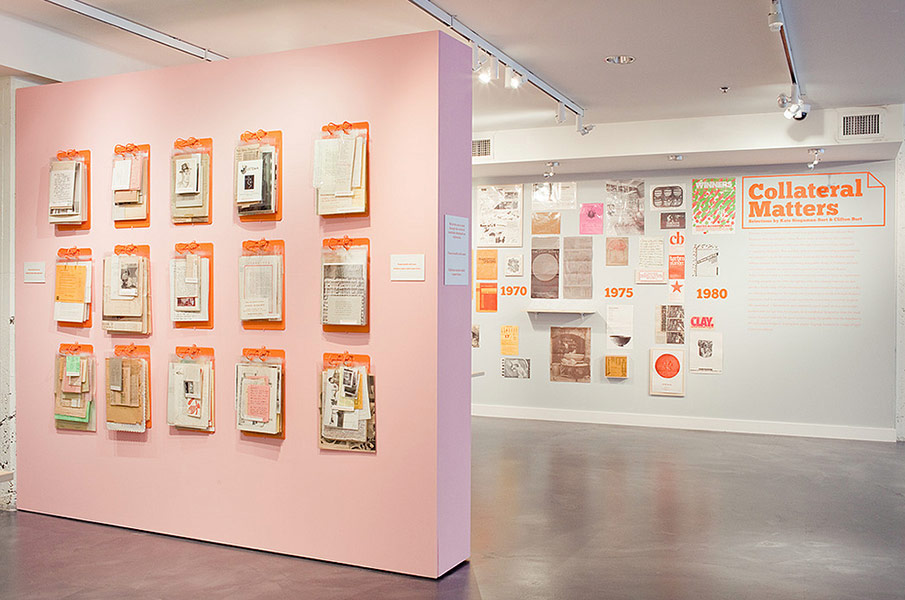
Yeah, I don’t think we ever fully appreciate those things when we’re kids.
I feel like I did so many jerky things to my mom. She was also a really good seamstress. She has a fashion design background and used to sew all my clothes, which were actually good and not dorky. I remember having a sit-down conversation with my mom the summer before I entered sixth grade. I said, “Mom, I really don’t want you to make my clothes anymore.” She totally rolled with it and took me shopping. I probably bought some crappy stonewashed jeans. (laughing) She was always really cool, but the one thing she never let me do was get a perm, which I’m thankful for now.
Was there a point in your life when you decided you had to take a big risk to move forward?
I think it was at the end of graduate school. I had decided that I wanted to apply to be an assistant professor at schools because I really enjoyed teaching. I was offered a position at DePaul University in Chicago and Mississippi State University. I was living in Lincoln, Nebraska at that point and I was born outside of Chicago, so Chicago seemed known to me. I had never lived in the South and hadn’t lived in a small town in a while, but I accepted the position at Mississippi State. It was scary because I was leaving a tight network and really strong community of friends from graduate school. The only person I would know would be my then boyfriend, now husband, who was moving with me.
What really helped me make the decision to take the job at Mississippi State was my interview with the head of the design department, Jamie Mixon. She is incredible and I felt like I would learn a ton from her, which was a big reason for choosing that job.
My time there yielded a lot of good things. Jamie was a fantastic teaching mentor and I grew so much as an educator and also in the way I was working as an artist and designer. I had a lot of space and it was my time to explore. I think the four years I spent there really made my move to Portland possible.
Did you also have your own studio on the side while you were teaching?
Yeah. My husband, Clifton, is also a graphic designer. At the time, he was working at this place within the University called Small Town Center doing design for architecture. And then we had a studio together called The Public Design Center. It was a non-profit design center and we would organize community workshops, help small businesses with branding, and host events and community movie nights. Even though it was only around for a short time, I think it did a lot of good.
That’s where we met my student at the time, Will Bryant. He was our first intern and now he’s going to graduate school here at PSU and shares studio space with us.
Are your family and friends supportive of what you do? It sounds like they are.
Absolutely. They are totally supportive. I am fortunate.
The majority of my friends are also in creative industries. I feel like we’re all really supportive of each other and get excited for each other when we see each other succeeding. That’s pretty great. Competition can get gross sometimes. The design world is really small. I think it’s the kiss of death if you’re an asshole. Don’t be a jerk, especially with the internet now—that was such an old person thing to say. (laughing)
Do you feel a responsibility to contribute to something bigger than yourself?
I do. Sometimes the nature of the personal projects I do can feel a bit like navel gazing and I hate that. On the other hand, when we had the Public Design Center in Mississippi, that felt really wonderful and rewarding because we were working with the community. And then teaching—I love it so much. Over half of my week is spent working with students and I wouldn’t want it any other way. I don’t think I could only do freelance work and not teach, but I also think it’s important to keep making things in addition to teaching. I want to be an active educator and maker.
Are you satisfied creatively?
I am. Well, maybe I’m not. I feel like I’m in a good spot with room for improvement. How about that? As I become more of an active educator, my school years get more hectic because I get involved with scheduling curriculum and organizing activities and events. From October to June, the central focus is pushing what’s happening in school along and then maintaining freelance projects. I work in shorter bursts during the school year and I do miss being able to work for longer amounts of time to push forward ideas or ways of working, which tends to happen more in the summer. I wish there was a way I could spread that out more throughout the year. I need to think of a way to balance it a little better.
Is there anything you see yourself doing in 5 to 10 years?
I’d like to do more book projects, curatorial work, and more installations.
I definitely want to continue to help the PSU design program grow. I’d love if we were able to work toward having a stand-alone area for the program. We’re in this older building right now, which makes us have this scrappy, DIY attitude, but it would be nice if we didn’t have to come from that position. I’m trying to figure out more long-term ways to get funding for the program. I have a feeling I’m going to be trying to figure out the world of asking for money and fundraising. I never thought I would do that, but I found myself signing up for this seminar about fundraising for a state institution.
I’m also passionate about creating dialogue about design education. I see myself getting more involved with thinking about where design education is going and if it needs to be tied to an institution—I don’t think it does. You don’t have to go to college to be a graphic designer. I truly recognize that and I want to make it worthwhile for students who choose to invest their time and money to come to PSU and get their design degree.
I also want to think about how education can grow and change along with the way design is growing and changing. It’s important to be open to change and rethinking curriculum because the profession is moving so fast.
“Of course you’re going to have days where you wake up and think it’s all bullshit, but that’s part of the game. It’s not going to be sunshine and rainbows everyday. You have to decide if this is something you want to spend your life with.”

If you could give one piece of advice to another designer/illustrator starting out, what would it be?
A lot of it is being sure that this is what you want to do. You have to have a level of engagement and excitement. Of course you’re going to have days where you wake up and think it’s all bullshit, but that’s part of the game. It’s not going to be sunshine and rainbows everyday. You have to decide if this is something you want to spend your life with. And it’s okay if this isn’t what you want to do. What you want to do is out there and this is just part of the process.
Also, another piece of advice is to be sure you’re putting the work you truly like in your portfolio and not just the work you think you should be making. If you’re making work in a way where it’s what you feel like you should be making, it’s not going to be fun and it’s going to fall flat. Then you’re going to get hired to do work that you don’t even want to do. I’ve had people disagree with me on this, but I’m a big believer in having a portfolio full of work that you’re really proud of and work that is a good representation of what you want to be making.
How does living in Portland impact your creativity?
This is the first place I’ve ever lived where I truly feel like this is where I’m supposed to be. I grew up in a really small town where I felt like a total freak and outsider. I went to a tiny college where I felt the same way. Then I went to graduate school in Nebraska where I found my band of weirdos, but it was still in Nebraska. In Mississippi, even though I liked the community of people I was in, I was still in this much larger community that I didn’t feel a part of. But here, it feels like this is where I’m supposed to be. I moved here when I was 30 and it was bizarre to have that feeling of belonging somewhere for the first time at 30 years old.
Being in Portland is super conducive to creativity and the community is great. I’m involved with a lot of things including the craft museum here in town and I’m on a committee that’s planning a design week for Portland in October. Of course, I’m super involved in school and one of the components of the PSU program that I like so much is that we really use the city as a classroom. The generosity of the Portland design community toward my students is just unbelievable; they welcome us with open arms.
You’ve been in situations where you’ve had a strong creative community and where you haven’t. Do you notice a difference between those times in your life and is it important to you to be part of a creative community?
I didn’t think that it affected me at the time. I used to think it didn’t matter, but it does matter—at least for me and the way I work. I know I need people. Not everybody needs a community and that’s fine, but I need it.
What does a typical day look like for you?
I try to compartmentalize as best as I can. Tuesdays, Wednesdays, and Thursdays are my full-on teaching days and I have classes, advising, and meetings upon meetings, which can sometimes drive me crazy. Sundays, Mondays, Fridays, and Saturdays are my away-from-school days. That’s when I travel or work on freelance projects in the studio.
Current albums on repeat?
My standbys are a trifecta of albums by Galaxie 500: On Fire, This is Our Music, and Today. Then I am always down for a shuffle of New Pornographers, Deerhunter, Jonathan Richman, and Talking Heads. I have a super soft spot for Built to Spill, Apples in Stereo, Neutral Milk Hotel, and Pavement because they take me back to my early 20’s. However, give me a good Phil Spector Wall Of Sound and I will melt—totally melt.
What are your favorite movies or TV shows?
My favorite movies are Badlands; Mystery Train; Paris, Texas; Network; Fame; and Wet Hot American Summer.
My favorite TV shows are Freaks and Geeks, Pee-Wee’s Playhouse, Mad Men, Six Feet Under, RuPaul’s Drag Race, NewsRadio, Strangers with Candy, and mother effing Friday Night Lights.
Any favorite books?
My reading for pure pleasure falls into the land of graphic novels. I intensely love Chris Ware and Daniel Clowes and I love reading The Best American Comics annual every year. I devour the Kramers Ergot anthologies. Also, Lynda Barry and Maira Kalman are queens. I’m currently reading thousands of pages of zombie comics, aka The Walking Dead.
Favorite food?
Grilled cheese and tomato soup.
What kind of legacy do you hope to leave?
This is such a hard question! Hmmm… I don’t ever want to take myself super seriously. I want to be serious about working hard, but I never want to get to the point where I feel like I don’t have anymore room to learn. I think that is dangerous. I hope that I continue teaching for a very long time, but also continue working on new projects and exploring new ideas. I don’t think you can continue being a very good teacher if you stop exploring and making. If that happens, well, then it is over. And I hope that my work makes people smile a bit, think a bit, and encourages them to make a bit.
